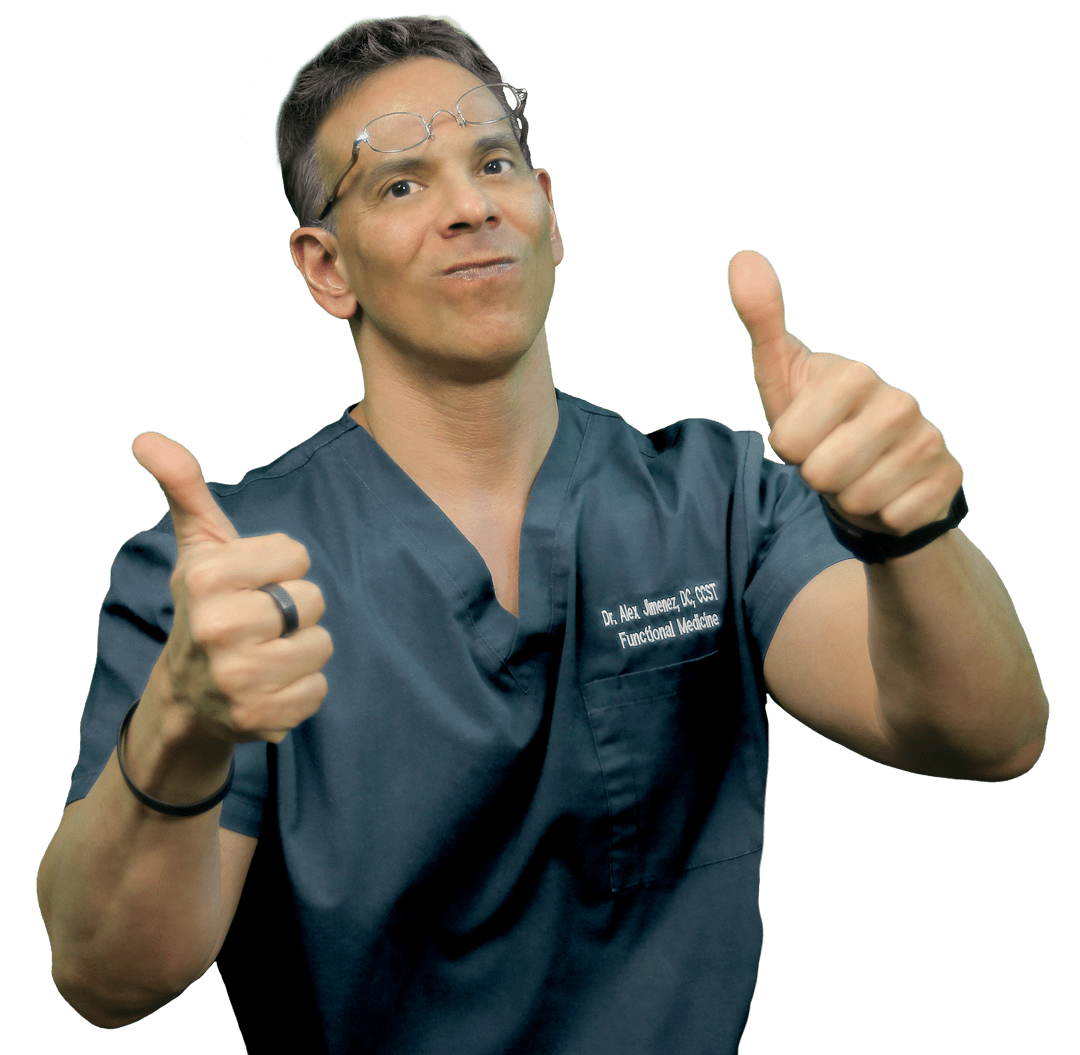Understand the risks of auto injuries associated with the cervical spine. Gather crucial information to safeguard your health.
Introduction
Picture this: you’re cruising down the road, humming to your favorite tune, when—BAM!—a fender-bender turns your neck into a creaky hinge straight out of a haunted mansion. Motor vehicle accidents (MVAs) can transform the neck, that marvel of flexibility, into a source of persistent pain. But fear not, dear reader, for we’re about to embark on a journey through the eerie world of cervical spinal injuries, with a dash of Gomez Addams’ charm to keep things lively. This guide explores why MVAs cause neck pain, how these injuries develop, treatment options, and the pivotal role of Dr. Alexander Jimenez, a distinguished chiropractor in El Paso, Texas, in helping victims recover.
Clinical Rationale for Cervical Spinal Pain from MVAs
Prevalence and Statistics
MVAs are a leading cause of cervical spinal injuries, with rear-end collisions being particularly notorious. A study found that 15% of MVA victims requiring hospital care suffer soft tissue cervical injuries, with women, restrained occupants, and those aged 40-49 at higher risk (Gargan & Bannister, 1989). Another study reported that 51.6% of traumatic spinal cord injuries (TSCI) from MVAs affect the cervical spine, often at the C4 and C5 levels, with incidence rising with age (Wang et al., 2022). In the U.S., whiplash and spinal disc injuries may exceed 1.2 million and 33,000 cases annually, respectively.
| Injury Type | Estimated Annual U.S. Cases | Common Demographics |
|---|---|---|
| Whiplash | >1.2 million | Females, 40-49 years |
| Spinal Disc Injuries | >33,000 | Drivers, passengers |
| Cervical SCI | 51.6% of TSCI cases | Ages 30-44 |
Biomechanics of MVAs
The cervical spine, comprising seven vertebrae, supports the head and enables its movement. During an MVA, especially a rear-end collision, the head undergoes rapid acceleration and deceleration, causing hyperextension and hyperflexion. This “whiplash” motion strains muscles, ligaments, and tendons, and in severe cases, fractures vertebrae or compresses the spinal cord. The S-shaped curvature of the cervical spine during impact increases the risk of soft tissue damage and nerve irritation.
Common Injuries
MVAs can cause a range of cervical injuries:
- Whiplash: Soft tissue damage to muscles and ligaments.
- Cervical Strain/Sprain: Overstretching or tearing of neck tissues.
- Disc Herniation: Displacement of intervertebral discs, potentially compressing nerves.
- Fractures: Breaks in vertebrae, such as Clay Shoveler’s fractures at C6, C7, or T1.
- Spinal Cord Injury: Severe cases may lead to tetraplegia, with 61.2% of cases being incomplete.
These injuries can cause immediate pain or develop into chronic conditions if untreated.
Citations:
- Gargan, M. F., & Bannister, G. C. (1989). Soft tissue cervical spinal injuries in motor vehicle accidents. Injury, 20(6), 349–351. https://doi.org/10.1016/0020-1383(89)90011-9
- Wang, L., Zhang, Y., & others. (2022). Current status of traumatic spinal cord injury caused by traffic accident in Northern China. Scientific Reports, 12(1), 13930. https://doi.org/10.1038/s41598-022-16930-9
Development of Musculoskeletal Injuries
Immediate vs. Chronic Injuries
Cervical injuries from MVAs often start with acute symptoms like pain, stiffness, and limited mobility. However, without prompt treatment, these conditions can progress to become chronic. A Canadian study found that 38% of MVA victims with grade 1 or 2 neck injuries reported pain at 3 months, 22% at 6 months, and 18% at 1 year (El Paso Chiropractor Blog, 2016). Up to 5% may face permanent disability, and over 5% experience pain for a decade or more.
Symptoms and Progression
Common symptoms include:
- Neck pain and stiffness
- Headaches, often originating from the neck
- Dizziness or vertigo
- Numbness or tingling in the arms
- Weakness in the upper extremities
- Cognitive issues like difficulty concentrating
Untreated, these can lead to:
- Chronic pain syndromes
- Degenerative changes like osteoarthritis
- Reduced range of motion
- Psychological impacts, such as anxiety or depression
Impact on Daily Life
Neck pain can disrupt daily activities, from driving to working at a desk. Chronic pain may lead to absenteeism, financial strain, and reduced quality of life, emphasizing the need for early intervention.
Citations:
- El Paso Chiropractor Blog. (2016, June). Auto injuries causing chronic neck pain. https://www.elpasochiropractorblog.com/2016/06/auto-injuries-causing-chronic-neck-pain.html
Personal Injury Rehabilitation- Video
Treatment Options for Neck Pain from Auto Injuries
Conservative Treatments
Most MVA-related neck injuries respond well to conservative treatments:
- Chiropractic Care: Spinal adjustments and manual manipulations restore alignment, reduce pain, and improve function. Dr. Alexander Jimenez uses these techniques to address whiplash and fractures, starting treatment once inflammation subsides (Jimenez, n.d.).
- Physical Therapy: Exercises strengthen neck muscles and improve mobility, while modalities like heat or ultrasound reduce pain.
- Medications: Over-the-counter drugs, such as ibuprofen, or prescription muscle relaxants, can help manage pain and inflammation.
Interventional Treatments
For severe cases:
- Epidural Injections: Reduce inflammation around compressed nerves.
- Surgery: Reserved for severe disc herniations or spinal cord injuries, with 92.5% of cervical SCI cases requiring surgery, often via anterior approaches (Wang et al., 2022).
Chiropractic Care’s Role
Chiropractors are key in diagnosing and treating MVA injuries. Dr. Jimenez recommends stretches and exercises to prevent further injury and promote healing, particularly for fractures like Clay Shoveler’s, using compression techniques to stabilize bones (Jimenez, n.d.).
Citations:
- Jimenez, A. (n.d.). Chiropractic & cervical spine fractures. LinkedIn. https://www.linkedin.com/pulse/chiropractic-cervical-spine-fractures-dr-alexander-jimenez-
- Wang, L., Zhang, Y., & others. (2022). Current status of traumatic spinal cord injury caused by traffic accident in Northern China. Scientific Reports, 12(1), 13930. https://doi.org/10.1038/s41598-022-16930-9
Personal Injury Cases in El Paso
Importance of Specialized Care
In El Paso, personal injury cases from MVAs are common, requiring specialized care due to:
- Complex injury patterns
- Need for accurate legal documentation
- Importance of early intervention to prevent chronicity
- Holistic recovery needs
Dr. Alexander Jimenez’s Expertise
Dr. Jimenez, a chiropractor and nurse practitioner, excels in treating MVA victims. He uses advanced imaging (MRI, CT scans) and diagnostic evaluations to assess injuries comprehensively. His holistic approach integrates chiropractic care with functional medicine, addressing nutrition, lifestyle, and psychological factors (Personal Injury Doctor Group). He also acts as a liaison, providing detailed medical reports for legal claims to ensure that patients receive fair compensation.
Citations:
- Personal Injury Doctor Group. (n.d.). https://personalinjurydoctorgroup.com/
- Jimenez, A. (n.d.). Dr. Alexander Jimenez. LinkedIn. https://www.linkedin.com/in/dralexjimenez/
Conclusion
Cervical spinal pain from MVAs is a serious condition that can lead to chronic issues if not addressed promptly. Understanding the biomechanics, recognizing symptoms, and seeking expert care are crucial for recovery. Dr. Alexander Jimenez’s expertise in El Paso makes him a trusted resource for personal injury victims, offering comprehensive care and legal support. If you’re experiencing neck pain after a motor vehicle accident (MVA), consult a professional promptly to optimize your recovery.
Disclaimer: This guide is provided for informational purposes only and should not be considered medical advice. Always consult a qualified healthcare professional for diagnosis and treatment.
Key Citations
- Soft tissue cervical spinal injuries in motor vehicle accidents. https://doi.org/10.1016/0020-1383(89)90011-9
- Current status of traumatic spinal cord injury in Northern China. https://doi.org/10.1038/s41598-022-16930-9
- Auto injuries causing chronic neck pain. https://www.elpasochiropractorblog.com/2016/06/auto-injuries-causing-chronic-neck-pain.html
- Maintaining a healthy spine by Dr. Alexander Jimenez. https://www.linkedin.com/pulse/maintaining-healthy-spine-dr-alexander-jimenez
- Chiropractic and cervical spine fractures by Dr. Jimenez. https://www.linkedin.com/pulse/chiropractic-cervical-spine-fractures-dr-alexander-jimenez-
- Dr. Alexander Jimenez’s professional profile on LinkedIn. https://www.linkedin.com/in/dralexjimenez/
- Personal Injury Doctor Group services overview. https://personalinjurydoctorgroup.com/
Post Disclaimers
Professional Scope of Practice *
The information herein on "Auto Injuries: Causes and Effects of the Cervical Spine" is not intended to replace a one-on-one relationship with a qualified health care professional or licensed physician and is not medical advice. We encourage you to make healthcare decisions based on your research and partnership with a qualified healthcare professional.
Blog Information & Scope Discussions
Welcome to El Paso's Premier Wellness and Injury Care Clinic blog, where Dr. Alex Jimenez, DC, FNP-C, a board-certified Family Practice Nurse Practitioner (FNP-C) and Chiropractor (DC), presents insights on how our team is dedicated to holistic healing and personalized care. Our practice aligns with evidence-based treatment protocols inspired by integrative medicine principles, similar to those found on dralexjimenez.com, focusing on restoring health naturally for patients of all ages.
Our areas of chiropractic practice include Wellness & Nutrition, Chronic Pain, Personal Injury, Auto Accident Care, Work Injuries, Back Injury, Low Back Pain, Neck Pain, Migraine Headaches, Sports Injuries, Severe Sciatica, Scoliosis, Complex Herniated Discs, Fibromyalgia, Chronic Pain, Complex Injuries, Stress Management, Functional Medicine Treatments, and in-scope care protocols.
Our information scope is limited to chiropractic, musculoskeletal, physical medicine, wellness, contributing etiological viscerosomatic disturbances within clinical presentations, associated somato-visceral reflex clinical dynamics, subluxation complexes, sensitive health issues, and functional medicine articles, topics, and discussions.
We provide and present clinical collaboration with specialists from various disciplines. Each specialist is governed by their professional scope of practice and their jurisdiction of licensure. We use functional health & wellness protocols to treat and support care for the injuries or disorders of the musculoskeletal system.
Our videos, posts, topics, subjects, and insights cover clinical matters, issues, and topics that relate to and directly or indirectly support our clinical scope of practice.*
Our office has reasonably attempted to provide supportive citations and has identified the relevant research studies or studies supporting our posts. We provide copies of supporting research studies available to regulatory boards and the public upon request.
We understand that we cover matters that require an additional explanation of how they may assist in a particular care plan or treatment protocol; therefore, to discuss the subject matter above further, please feel free to ask Dr. Alex Jimenez, DC, APRN, FNP-BC, or contact us at 915-850-0900.
We are here to help you and your family.
Blessings
Dr. Alex Jimenez DC, MSACP, APRN, FNP-BC*, CCST, IFMCP, CFMP, ATN
email: coach@elpasofunctionalmedicine.com
Licensed as a Doctor of Chiropractic (DC) in Texas & New Mexico*
Texas DC License # TX5807
New Mexico DC License # NM-DC2182
Licensed as a Registered Nurse (RN*) in Texas & Multistate
Texas RN License # 1191402
ANCC FNP-BC: Board Certified Nurse Practitioner*
Compact Status: Multi-State License: Authorized to Practice in 40 States*
Graduate with Honors: ICHS: MSN-FNP (Family Nurse Practitioner Program)
Degree Granted. Master's in Family Practice MSN Diploma (Cum Laude)
Dr. Alex Jimenez, DC, APRN, FNP-BC*, CFMP, IFMCP, ATN, CCST
My Digital Business Card






 Again, I Welcome You.
Again, I Welcome You.
Comments are closed.